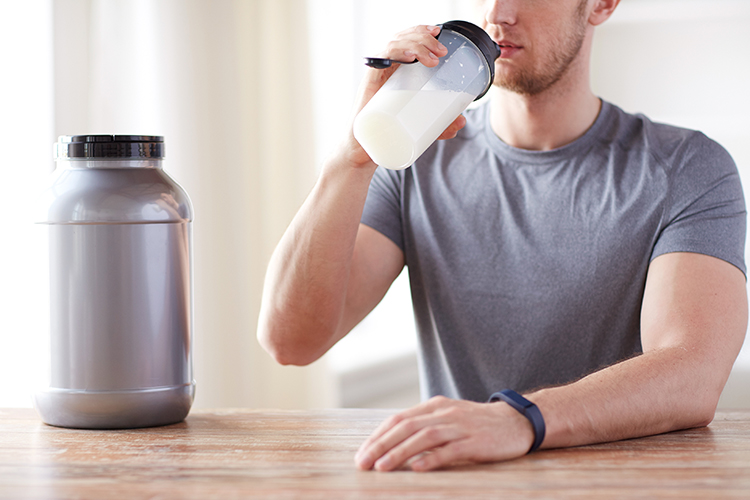
Kettlebell Deadlifts Ultimate Guide to Strength Form and Power

Lower Body HIIT Workout Burn Fat and Build Strength Fast

Dumbbell Bent Over Row Ultimate Guide to a Stronger Back

Weightlifting Workout Routines To Build Strength and Muscle
The Best Way to Take Creatine

Creatine is a highly popular supplement in the world of fitness and bodybuilding, renowned for its ability to support increased muscle mass, strength, and exercise performance. But knowing when, how much, and the best way to take creatine can be a bit of a puzzle. Let’s demystify the process and put you on the path to reaping the maximum benefits from your supplementation.
The Best Way to Take Creatine: Optimizing Your Supplements
What is Creatine?
Creatine is a naturally occurring substance found in muscle cells. It helps your muscles produce energy during high-intensity exercise or heavy lifting. Though we can get creatine from foods like meat and fish, supplementation enables us to consume higher amounts that can improve several key factors in sports performance.
The Science Behind Creatine
Creatine primarily functions by helping to replenish adenosine triphosphate (ATP) stores, our body’s primary source of energy. During intense physical activities, ATP depletes rapidly. Creatine supplementation ensures that these ATP stores are replenished quickly, allowing for prolonged high-intensity exercise.
Additionally, it aids in promoting muscle growth by stimulating proteins responsible for muscle repair and new muscle fiber growth. Studies also suggest that it can reduce muscle damage and inflammation after exhaustive exercise, contributing to quicker recovery.
Best Way to Take Creatine
Knowing the science behind creatine, we can now discuss the most efficient ways to take it. There are two common methods: loading and regular supplementation.
Creatine Loading: Creatine loading involves taking a high dose (20 grams per day) for 5-7 days to saturate your muscles with creatine quickly. After the loading phase, you lower the dose to 3-5 grams per day to maintain the high levels. While this method can saturate your muscles faster, it can also lead to gastrointestinal discomfort in some individuals.
Regular Supplementation: This involves taking a steady dose of (3-5 grams per day) without a loading phase. Although it takes longer (about 3-4 weeks) to reach full muscle saturation, it tends to cause fewer side effects.
Research has shown that both methods eventually lead to similar levels in muscles. The choice between them depends on your personal preference and tolerance.
When to Take it
There’s ongoing debate among fitness enthusiasts about the ideal time to take creatine. Some argue it’s best to take it before a workout to optimize energy availability. Others believe taking it post-workout aids in recovery and growth.
Current research suggests that timing might not be as important as once thought. What matters more is consistent daily intake. As long as you’re taking your supplement every day, you’ll maintain high levels in your muscles to support energy production and recovery.
However, if you choose to take it around your workout time, a protein-carb snack or meal could potentially boost its absorption, as insulin helps transport creatine into muscles.
Choosing the Right one
There are various forms available, including monohydrate, creatine ethyl ester, and creatine hydrochloride, among others. However, monohydrate is the most researched and generally considered the best form due to its high absorption rate, safety, and cost-effectiveness.
Potential Side Effects and Precautions
While it is generally safe for healthy individuals, potential side effects, usually related to overuse, can include muscle cramping, dehydration, and gastrointestinal issues. Ensure to stay well-hydrated, especially during the loading phase.
People with kidney disease or those at risk should be cautious with creatine supplementation, as its long-term safety in these individuals is not well-studied. As with any supplement, it’s wise to consult with a healthcare professional before starting.
Creatine supplementation can be a powerful tool in your fitness arsenal, supporting muscle growth, strength, and performance. Whether you choose to load or take a regular dose, what’s key is consistency. Pairing your supplementation with a balanced diet and rigorous workout routine will help you maximize your results. Remember, supplements like creatine are designed to support your fitness journey, not replace hard work and a nutritious diet.
Most Recommended
Subscribe to our Newsletter
Stay up to date on the latest men’s health, fitness and lifestyle trends and tips.
About Us
Men’s Fit Club was started with the goal of empowering men to get the most out of their lives. This meant going beyond exercise and diet tips to really address the broad range of issues that men face on a daily basis – topics like recreation, finding love, sexual health and even sound fashion advice.
Quick Links
© COPYRIGHT MEN'S FIT CLUB 2025. All Rights Reserved

